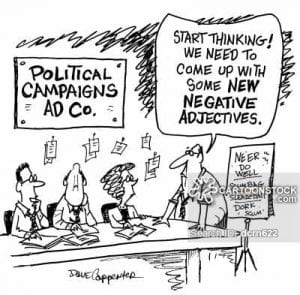
January is often a time to develop resolutions for the New Year. Prior to thinking ahead, I like to reflect on the past. It can be fruitful to consider the communication trends at the societal level, which often influence the corporate strategies. Based on evaluating my social networks, I noticed communication processes in 2016 were unique. Although I tried to avoid American political discussions, the communication strategies both formal and informal were fascinating. When teaching abroad, I was a bit surprised how much of the world was turned into American politics. By the time Fall came around and the American political debates were in full swing, it was difficult to avoid some form of political commentary. Additionally, the communication strategies employed in the political campaigns incorporated intriguing communication techniques both on large scale and storytelling, which seemed to make connections across generations and cultures. I have no doubt research and editorials will be written analyzing the impact of mass media on our social networks, like Facebook and Twitter. In the following, I will highlight some communication anomalies from 2016 and propose a challenge for 2017.
First, let’s take into consideration that as communication professionals, we might evaluate content as having value or interest, then share it within our network. I too take part in this sharing of articles and videos. In 2016, it appeared the political divides forged unprecedented open forums in social media to voice political “propaganda.” Even with the vast amounts of information available, our interpretation of the content can be subjective based on our own reality. Did you notice a greater number of informational silos being developed?  I did within my social networks and truly struggled with the level of political communication and miscommunication.
I did within my social networks and truly struggled with the level of political communication and miscommunication.
From an ethical communication perspective, these pieces of political “propaganda” and persuasive techniques might influence others. What does it mean to accept diversity and be inclusive? I find there is value in trying to understand multiple perspectives, even when there might be fundamental differences. Can we listen without being personally obligated to agree? I found myself acknowledging other’s voices are important, but avoided engaging in personal views. My thoughts has been that it might be just as important to be aware and avoid getting caught up in a frenzy of negativity. 
In an effort to maintain a positive attitude, I took control over what I would view.  I will admit that I was one of those, who unfriended relatives and longtime friends with passionate political views at either end of the spectrum. On the political front, I really tried to gather information from multiple perspectives prior to formulating my judgment. This is not an easy process and I was not always successful.
I will admit that I was one of those, who unfriended relatives and longtime friends with passionate political views at either end of the spectrum. On the political front, I really tried to gather information from multiple perspectives prior to formulating my judgment. This is not an easy process and I was not always successful.
So, at what point do we unplug, make a stand, or take a pause? Do we have sufficient understanding of how this information era and open-forum social media environment are influencing our society? I posed these questions as points to ponder because I certainly do not have a definitive answer.
Hence, it is time to make our mark in 2017. There is a common adage, Attitude is everything! “Attitude is a powerful determinant of evaluative responses to the source and content of influence attempts (Pratkanis, A., Breckler, S., & Greenwald, A., 2014, p.438).” One interpretation is that if you look for the positive, you will see the positive. As communications professionals we value understanding the full picture, how do we apply information from diverse perspectives?
I plan to focus on optimism in 2017. Not in a vacuum; but convinced that with a good attitude, seeking to understand, and being collaborative, great opportunities are ahead of us. How about you?
Reference
Pratkanis, A. R., Breckler, S. J., & Greenwald, A. G. (2014). Attitude structure and function. Psychology Press.
Posted by Patty Goodman, Ed.D., Faculty
Very nicе pߋst. I just stumbled upon y᧐ur weblog and wisһed to say
that I have really enjoyed browsing your blog poѕts.
In any case I will be subscribing to yoᥙr feed and I hope you write again ѕoon!
You are welcome to use the concepts. Enjoy!